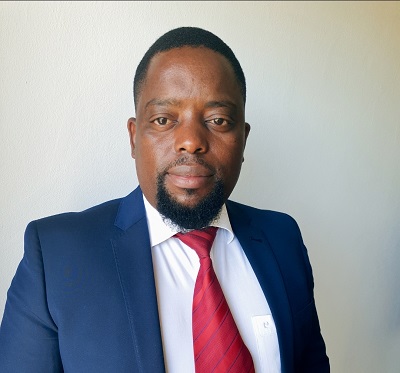Reinsurance in Emerging Markets: Unlocking Growth in Africa and Asia
Reinsurance plays a quiet but crucial role in developing economies — it’s the financial safety net that allows insurers to take on more risk, drive innovation, and expand protection to underserved markets.
In emerging regions like Africa and Asia, reinsurance isn’t just about stability; it’s a catalyst for growth, investment, and economic resilience.
For South Africa — the continent’s most mature insurance market — reinsurance sits at the crossroads of opportunity and reform. Understanding how capacity building, regulatory maturity, and local retention policies shape this landscape is key to unlocking future potential.
1. Building Reinsurance Capacity: From Dependence to Self-Reliance
Historically, African insurers have relied heavily on international reinsurers in Europe and Asia to absorb large or catastrophic risks. While this has provided stability, it’s also led to significant premium leakage — where much of the risk premium flows offshore.
According to the African Reinsurance Corporation (Africa Re), local retention rates across the continent average only 30–40%, meaning that more than half of Africa’s reinsurance premiums are ceded abroad.
South Africa, however, stands apart. Its reinsurers — including Santam Re, Hannover Re Africa, and Munich Re of Africa — maintain strong balance sheets and are regulated under Solvency Assessment and Management (SAM), which aligns closely with Europe’s Solvency II standards. This regulatory alignment attracts international reinsurers while fostering local capacity.
The challenge lies in extending this sophistication beyond South Africa’s borders. Developing regional hubs, promoting intra-African retrocession, and investing in actuarial and risk management talent are all critical steps toward self-sustaining reinsurance ecosystems.
Example:
In 2023, Santam Re expanded its footprint across Southern Africa and East Africa, offering local reinsurance solutions and training programs that help domestic insurers improve underwriting standards and pricing discipline. This type of cross-border capacity building reduces dependence on external capital and supports regional resilience.
2. Regulatory Maturity: Creating Confidence and Attracting Investment
Regulation is the backbone of reinsurance confidence. Without strong frameworks, reinsurers face uncertainty over capital requirements, contract enforceability, and claims settlement.
South Africa’s Financial Sector Conduct Authority (FSCA) and Prudential Authority have led the continent in developing a transparent, risk-based supervisory regime. SAM, implemented in 2018, set a benchmark for regulatory maturity that many African markets are now looking to emulate.
Elsewhere, progress is uneven:
Kenya introduced new reinsurance regulations in 2022 aimed at boosting local retention and governance.
Nigeria and Ghana are tightening licensing standards for foreign reinsurers to promote domestic growth.
Asia, particularly markets like India and Indonesia, is seeing similar reform — balancing open competition with national interest.
Regulatory convergence across Africa and Asia is vital for attracting global reinsurers while ensuring fair competition with local players. When investors and rating agencies see consistent solvency frameworks, capital flows follow.
Professional insight:
South Africa’s reinsurance framework can serve as a template for the continent — blending strong prudential oversight with innovation flexibility, allowing emerging markets to grow sustainably while protecting policyholders.
3. Local Retention Policies: Balancing National Interest with Global Integration
One of the most debated issues in emerging market reinsurance is local content requirements — policies that require insurers to place a percentage of their reinsurance business with domestic reinsurers before going abroad.
South Africa’s Insurance Act (2017) allows insurers to use both local and foreign reinsurers but sets clear standards for credit quality and authorization. Meanwhile, several African countries — including Nigeria, Tanzania, and Egypt — enforce mandatory cessions to national reinsurers.
The intent behind these policies is understandable: keep capital within the economy, strengthen domestic markets, and build resilience. However, if applied too rigidly, they can limit competition, increase costs, and reduce capacity — especially for complex or catastrophic risks.
The optimal approach is measured localization: encouraging local participation through partnerships, co-reinsurance, and knowledge transfer rather than strict quotas.
Example:
In 2022, the African Trade & Investment Development Insurance (ATIDI) partnered with Munich Re to expand political risk and infrastructure reinsurance capacity across Africa. This hybrid model — pairing local expertise with global capacity — shows how collaboration, not isolation, drives sustainable growth.
4. The Asian Parallel: Lessons for Africa
Asia’s experience offers a useful comparison.
India’s GIC Re successfully developed regional dominance by balancing mandatory domestic cession (currently 5%) with international expansion.
Singapore positioned itself as Asia’s reinsurance hub by creating a low-tax, high-regulation environment that attracts global reinsurers.
African markets can adopt similar strategies: develop regional reinsurance centers, align regulations, and attract capital through predictability and transparency.
Professional Takeaway
For South Africa and its regional peers, the future of reinsurance lies in capacity creation, regulatory cooperation, and intelligent retention.
Build local expertise and capital strength through education and investment.
Maintain high regulatory standards to attract trusted global partners.
Encourage collaborative retention, where local and international reinsurers share both risk and knowledge.
As climate risks intensify and infrastructure demand rises, reinsurance will remain the financial backbone of sustainable growth across emerging markets.
South Africa’s maturity gives it a unique role — not just as a participant, but as a continental leader shaping the future of African reinsurance.










